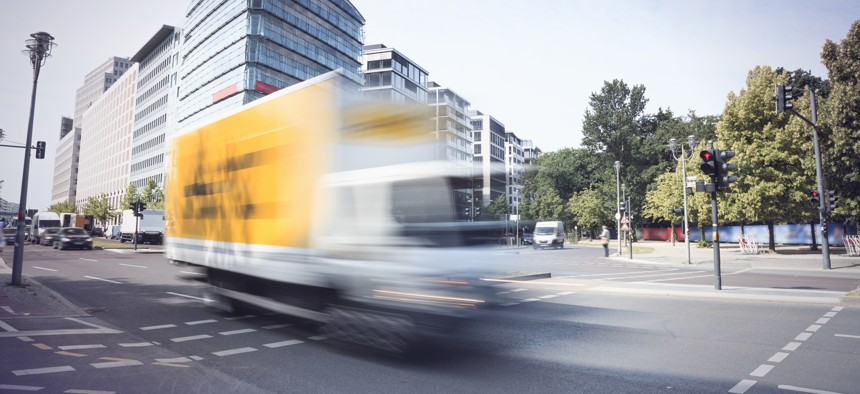Wireless data reduces high-speed accidents at intersections

GettyImages/crossbrain66
Wireless data transmitted between oncoming vehicles and traffic signals is allowing researchers to dynamically change the duration of green lights to prevent accidents.
To reduce speed-related casualties related to vehicles running red lights, researchers have developed technology to dynamically extend the duration of traffic lights.
According to the Federal Highway Administration, traffic signals are prime locations for accidents, with more than 2 million crashes and 3,000 fatalities a year. Technology developed by Purdue University’s Joint Transportation Research Program and the Indiana Department of Transportation (INDOT) will collect data from wireless transmitters installed in vehicles, calculate the speed and trajectory of oncoming vehicles and communicate that information to the signal, which uses embedded intelligence to adjust the time the light stays green or to change to a yellow light earlier than necessary.
Because the technology is built on the wireless transmission of data rather than sensors embedded in the roadway, the solution requires much less infrastructure investment. The technology has been initially designed for large vehicles and semi-trailers that need more stopping distance and are therefore twice as likely to run a red light.
"To reduce crashes, the key idea is to provide dilemma-zone protection," Purdue Transportation Research Engineer Jijo Mathew told Purdue News, referring to the section of a roadway directly upstream of an intersection. "One would think yellow time can be extended; however, drivers tend to adapt to this, resulting in lower probabilities of stopping.”
The system can extend the green light to ensure that vehicles can clear the intersection; however, when there are multiple vehicles competing for green time, the system will flash the yellow light before the cars enter the dilemma zone.
The wireless devices will be placed in both the traffic lights and in vehicles, many of which are already coming off assembly lines with built-in high-bandwidth, low-latency technologies like 5G broadband, Purdue principal research analyst Howell Li said. Specialized software at the signal controller will tie the components together.
The project was tested on a stretch of highway in Tippecanoe County, Ind. During tests, the system was able to detect vehicles traveling 55 miles per hour, in a six-foot waypoint radius spaced 50 feet apart, with 95% accuracy. Using this data to estimate risk mitigation, researchers concluded dilemma zone incursions at that particular testing site could be reduced by 34%.
The technology will be useful in reducing heavy vehicle red-light accidents, INDOT Signal Systems Field Engineer Tom Platte said, though he added that it will require vehicle manufacturers to install the technology.
"During my time working at the Indiana Department of Transportation, I have only been aware of conceptual-use cases involving onboard vehicle communication technology integrating with live traffic signal control,” he said. “Our new technology moves this integration beyond the merely conceptual. This work provides an implemented real-world use case that addresses an important safety concern, among other applications."





